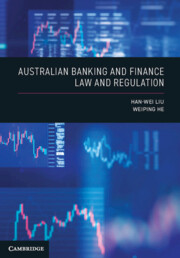Book contents
- Australian Banking and Finance Law and Regulation
- Acknowledgement of Country
- Australian Banking and Finance Law and Regulation
- Copyright page
- Contents
- About the authors
- Acknowledgements
- Table of cases
- Table of statutes
- Abbreviations
- Chapter 1 Regulatory theory and framework
- Chapter 2 Consumer protection and consumer credit
- Chapter 3 Financial products regulation
- Chapter 4 New challenges in the data-driven financial markets
- Chapter 5 Banks, banking and the banker–customer relationship
- Chapter 6 Accounts
- Chapter 7 Duties of the banker and the customer
- Chapter 8 Cheques and bills of exchange
- Chapter 9 Electronic banking
- Chapter 10 Lending, secured lending and guarantees
- Index
Chapter 8 - Cheques and bills of exchange
Published online by Cambridge University Press: 14 November 2024
- Australian Banking and Finance Law and Regulation
- Acknowledgement of Country
- Australian Banking and Finance Law and Regulation
- Copyright page
- Contents
- About the authors
- Acknowledgements
- Table of cases
- Table of statutes
- Abbreviations
- Chapter 1 Regulatory theory and framework
- Chapter 2 Consumer protection and consumer credit
- Chapter 3 Financial products regulation
- Chapter 4 New challenges in the data-driven financial markets
- Chapter 5 Banks, banking and the banker–customer relationship
- Chapter 6 Accounts
- Chapter 7 Duties of the banker and the customer
- Chapter 8 Cheques and bills of exchange
- Chapter 9 Electronic banking
- Chapter 10 Lending, secured lending and guarantees
- Index
Summary
For a long time, cheques were the main, if not the only, means of third-party payment and deposit from and to bank accounts. The process is simple. A customer provides a third party a cheque that contains important details such as their account number, the date of issue, a payment amount and an endorsement (their signature). The third party then gives this cheque to a bank. The bank then confirms the cheque’s authenticity and processes it. If necessary, this requires communicating with the customer’s bank if the third party and the customer bank with different banks. The end result is the transference of money from the customer’s bank account to the third party’s account.
Keywords
- Type
- Chapter
- Information
- Australian Banking and Finance Law and Regulation , pp. 210 - 245Publisher: Cambridge University PressPrint publication year: 2024

